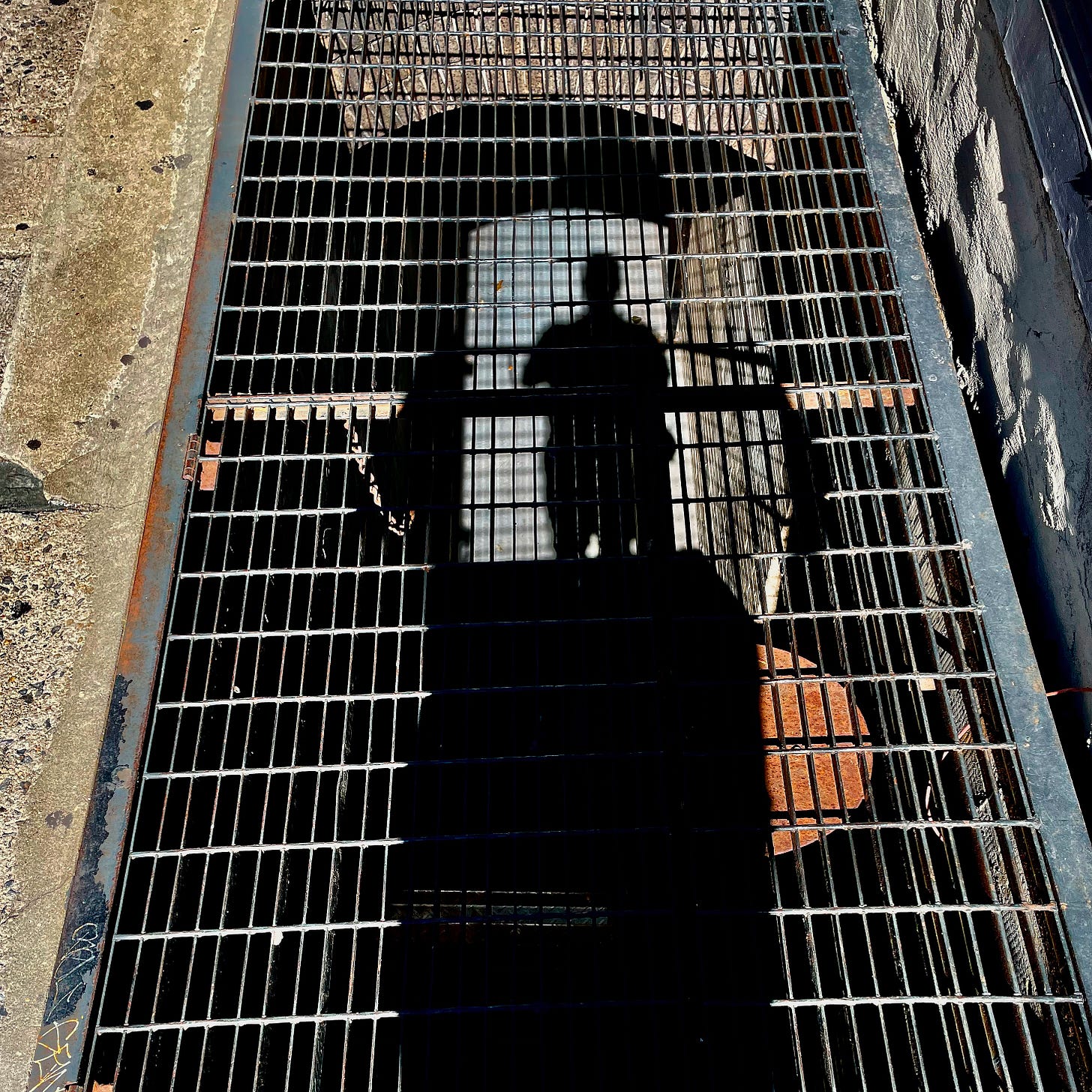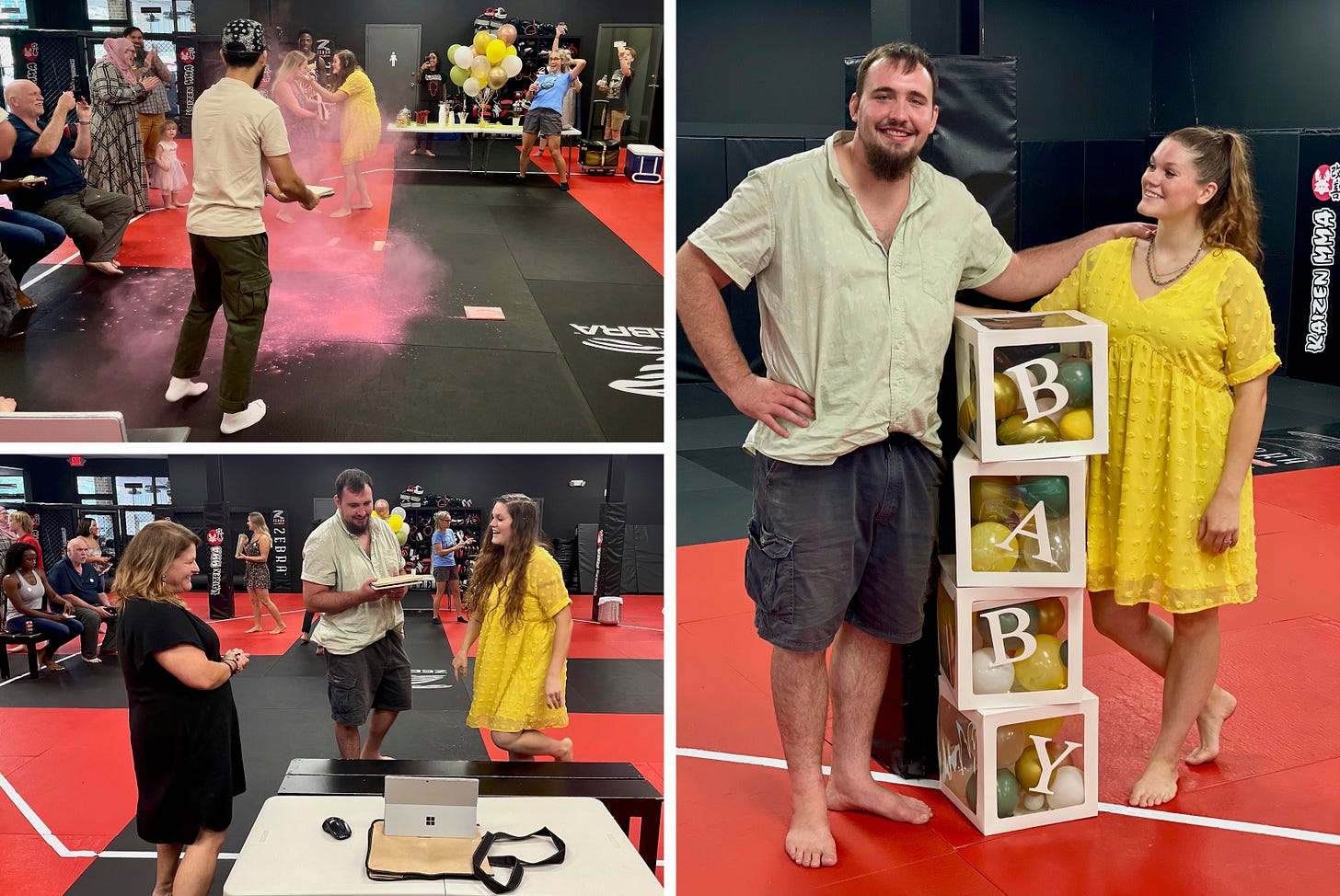Don't Play the Blame Game
Things happen. Life happens. Sometimes you just need a little time and a mental reset
We live in a culture of blame.
The thought came to me as I tried to stretch out my right leg following a long car ride earlier this month. Thanks to years of long-distance bike riding, my left leg gradually becomes shorter, and I get out of alignment.
For years, I managed to self-correct the shortened leg (I didn’t spend all that time observing my dad for nothing) and held severe pain mostly at bay by regularly stretching.
The knee pain started last year. It wasn’t a surprise after almost 3,500 miles of pandemic-induced walking, but the aches I started to feel while driving any distance were real and stabbing.
Now when I sit for any length of time, my left leg gradually shortens and I’m get out of alignment. Despite my understanding of what’s occurring, the stretching and attempts to self-correct no longer work as well as they once did.
I blamed it on the bike riding, the walking, the aging process. I looked at the childhood scar on my right leg, adjacent to my knee, and wondered if that was part of it.
And then after a momentary pity party, I put the blame away. I finally succumbed and went to a chiropractor. The diagnosis — my left leg was a full 2 inches shorter than my right — was no surprise. An adjustment brought soreness but instant relief.
An Example from Childhood
Blame is a fundamental flash response. As a society, we have managed to turn blame and its variants — anger, denial, stubborn refusal to compromise, and outright lies — into a bizarre form of high art. And the price of this art just keeps going up, serving as a wedge that only divides us.
In some cases, the blame feels legitimate. Take, for example, the childhood scar on my leg.
My mom’s dad could do anything mechanical and build anything. He was a Seabee during World War II and built oil refineries before that. It was a skill I managed to simultaneously admire and yet not grasp, especially as a kid.
Paw-Paw, my chosen moniker for him, drove his cars long past their expected shelf life — one made it more than 400,000 miles. That meant regular oil changes and a slippery aluminum pan with sharp edges that helped keep the sludge from a staining the foundation of his self-constructed two-car garage.
One day on a visit to Longview — I was 10 or 11 — I walked into the hallowed garage and didn’t pay attention to where I was going, despite my grandfather’s warning about the oil pan. Of course, I stepped right in it and went to the floor in a heap, my leg getting sliced by the pan’s sharp edge. Blood gushed from a slashed artery — for a moment, I felt like I was impersonating Dan Aykroyd in the Julia Childs sketch on SNL.
Fortunately, my mom fashioned a tourniquet out of a belt and my family managed to get me to the hospital. The doctor stitched me up and sent me home, not bothering to mention that I could use the three-inch scar to start a meteorology career if I so chose.
Now, every time the weather changes, the area near my scar just aches. For years, I blamed it on my grandfather’s oil pan, not on my refusal to listen to his warning or my general lack of physical coordination.
Taking Responsibility
Pre-pandemic, the D.C. Metro system unveiled “Back to Good,” an achievable, though not terribly aspirational marketing campaign that followed a series of — and this is putting it mildly — struggles.
As strange as the campaign was, at least it was Metro’s way of being accountable. And in that respect, you had to admire the transit agency for being honest about its problems. (Also, give them props for realizing that “The March to Mediocrity” would be harder to fit on a business card.)
Taking responsibility for your actions is a learned skill. Well into adulthood, I was at best a C-level student on that front. I’ve said before that I became a better father after my dad died, in part because I realized life was finite. Ultimately, it wasn’t until well after I became a parent that another, equally important lesson finally started to sink in:
What sort of example would I be for my kids — how could I hold them accountable — if I didn’t do the same myself?
What I discovered, through trial and error (mostly error). is that we learn far more from our failures than we do our successes. It’s the lessons we draw from our mistakes that teach us how to be better. Not necessarily good, or best, but better.
Now I’m the first to admit it when I screw up. Instead of assigning 100% blame to others, I take responsibility for my part. (Exception: the outcome of the 2016 presidential election.)
Input to Output
In the interest of full disclosure, I started writing this essay soon after that car ride. I wrote and rewrote it, having made the promise to myself and you, the reader, to keep writing no matter what. But my thoughts, scattered as they were around a loose theme, never seemed to come together.
For large portions of August, I was frustrated because I didn’t feel like writing, and I rely so heavily on it to process my thoughts. My brain became clogged with fragments of ideas and projects, and nothing was coming out. Subconsciously, I started looking for a reason; finding none, I searched for someone/something to blame.
Why couldn’t I write? It was a motley bunch of things. Family came to visit. Jill and I took a couple of short getaway trips. I started work on another freelance project. Meanwhile, I found myself reading; in a two-week span, I motored through three books and started a fourth, something I haven’t done in more than a year.
What was strange was that I also didn’t post anything to social media, and I didn’t feel the need to do so. On occasion, I scrolled through various feeds and commented on the activities of others — the “congratulations/condolences/happy birthday-anniversary-major life event” thing — but on my end it was radio silence.
Like many of you, I’ve spent a significant amount of time on social media over the past decade plus. It is an essential part of my business, especially as a photographer. On a personal level, I generally enjoy feeling connected to others in some way, and social media can be a terrific platform for sharing stories about life events.
But, for the past several weeks, I didn’t feel like sharing. What I needed, it turns out, was a mental reset.
And, as I’m (belatedly) learning, that’s OK. There’s no need to blame the muse for taking a vacation.
Postscript(s)
• A friend from my Substack writing group — Sarah Miller, author of “Can We Read?” — passed along an excellent essay on how we need to “input to output.” You can read it below.
• The long Labor Day weekend was what brought me back to social media and finally nudged me into finishing this essay. Here’s what happened:
Thursday-Saturday: A sudden opportunity to catch Jason Isbell & the 400 Unit at Pier 17 in New York City turned into a lovely and unexpected mini reunion with Ben, Emma, and Nicholas as well as extended family members Bernadette, Elie and Ginno.
The trip wasn’t planned until last week, when I was offered two free tickets to the show and started asking if others wanted to join. Nick, who has seen Isbell multiple times, came up to Alexandria to drive with me following a work meeting in Richmond. Ben and Emma agreed to go to the show as well.
I had been to Isbell concerts with Bernadette and Ginno, who convinced Elie to come along for Friday’s show at the South Side Seaport. Earlier in the day, Ben, Ginno, Nick and I went to a Basquiat exhibit before meeting up with Emma for lunch in Midtown. Then we separated and I went to the Lou Reed exhibit at the New York Public Library branch at Lincoln Center.
I hadn’t been to New York since Christmas— the longest span since Ben moved up there 13 years ago this week. (Both facts boggle the mind). The weather gods were on our side for once; it was sunny, not humid and temperatures were in the low to mid 80s.
On Friday I walked almost 12 miles; on Saturday, after breakfast with the three kids and Gaby, I dropped off Nick at JFK and drove home, where another memorable day awaited.
Sunday: Thanks to Kate and Matt, Jill and I are having our first grandchild next February. On Sunday, the Crawford and Cook families hosted a “gender reveal” party at the Kaizen MMA studio in Falls Church. Kate and Matt, both of whom work for Kaizen and are deeply embedded in mixed martial arts, decided to reveal the gender by breaking boards that would explode with the properly colored dust.
With family and friends watching — some in person and some on Zoom — the soon-to-be parents busted the boards and pink dust flew everywhere. (Props to their unsuspecting friends who were holding the boards.) Our daughter and son-in-law are having a girl, due on Feb. 22 and to be named Marley Ione Crawford.
Ione is especially special because it’s my mom’s middle name. It also was the middle name of my great aunt Frances, who helped raise my mother in West Texas during World War II. (My maternal grandmother died a week after mom was born and, soon after, my grandfather joined the Navy following the Japanese bombing of Pearl Harbor.)
Kate looks great — she is healthy and happy. We think Matt will be a terrific father. And we’re grateful that they have such a good support system — their own extended family — at work. People came and stayed for several hours, just hanging out and talking. It was a lovely way to end the summer.






great to catch up with you, I always enjoy reading Our Reality Show!
You and Jill will be wonderful grandparents !
Great to have you back, Glenn! Amazing to hear the story of your leg...and, stunned you walk so much! I'll have to keep this article from my doctor, lest she get any wild ideas!!
How about this coincidence? Like DC, Austin has adopted a similar city motto to "Back2Good," only ours is "Back2TolerablyMediocre," and features what I thought was a stylized "W," but turns out is simply a silhouette of our mayor shrugging.
Welcome back, peace yo✌, and I look forward to more "Reality Show"s!😁👍